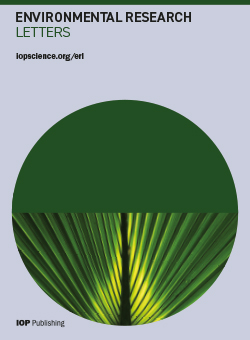Footprints of drought risk on Africa’s agricultural, water and nutritional security
IF 5.6
2区 环境科学与生态学
Q1 ENVIRONMENTAL SCIENCES
引用次数: 0
Abstract
Prolonged and recurrent droughts seriously threaten Africa’s food and water security. This threat frequently coexists with human-induced calamities, such as domestic and international conflicts and civil unrest, which could exacerbate the socio-economic instability already present in the region. Using a novel data-driven approach, we evaluated how drought risk in Africa affects the security of various crucial sectors of sustainable development, such as agriculture, water, and food nutrition/health (referred here as ‘nutritional’). Our findings show that different sectors and geographical areas exhibit distinct risk footprints. In Central African countries, for instance, we found that social instability linked to higher nutritional risk is more prevalent than that resulting from the agriculture and water sectors. Socio-economic volatility rather than uncertainty in the climate is the primary driver of this elevated nutritional risk. However, most Northern African countries are at risk of considerable agriculture and water insecurity because of extreme water stress and unstable climate trends. We indicate that the risk is majorly driven by recurrent drought events in Southern Africa, which significantly affect inclusive sectoral securities. The cause of higher risks in Eastern and Western Africa has been found to be an unfavorable interaction of all the risk components—vulnerability, exposure, and hazard. Notably, basic amenities, climate stability, and access to sustainable and renewable water sources are often missing from Africa’s sectoral risk hotspots. Our results emphasize the necessity of maximizing the efficacy of bottom-up initiatives to achieve sustainable food and water security, by integrating socio-economic policies and climate change at the granular level through observation.干旱风险对非洲农业、水和营养安全的影响
长期和反复发生的干旱严重威胁着非洲的粮食和水安全。这种威胁经常与国内和国际冲突及内乱等人为灾难同时存在,这可能会加剧该地区本已存在的社会经济不稳定性。我们采用一种新颖的数据驱动方法,评估了非洲的干旱风险如何影响可持续发展的各个关键领域,如农业、水和食品营养/健康(此处称为 "营养")的安全。我们的研究结果表明,不同部门和地理区域呈现出不同的风险足迹。例如,在中部非洲国家,我们发现与营养风险较高相关的社会不稳定比农业和水利部门造成的风险更为普遍。造成营养风险升高的主要原因是社会经济的不稳定性,而不是气候的不确定性。然而,由于极端的用水压力和不稳定的气候趋势,大多数北非国家都面临着相当大的农业和水资源不安全风险。我们指出,这种风险主要是由南部非洲经常发生的干旱事件造成的,这些事件严重影响了包容性部门证券。东非和西非风险较高的原因是所有风险要素--脆弱性、风险敞口和危害--之间的不利互动。值得注意的是,非洲的行业风险热点往往缺少基本设施、气候稳定性以及可持续和可再生水源的获取。我们的研究结果强调,有必要通过观察将社会经济政策与气候变化结合起来,最大限度地发挥自下而上举措的功效,以实现可持续的粮食和水安全。
本文章由计算机程序翻译,如有差异,请以英文原文为准。
求助全文
约1分钟内获得全文
求助全文
来源期刊

Environmental Research Letters
环境科学-环境科学
CiteScore
11.90
自引率
4.50%
发文量
763
审稿时长
4.3 months
期刊介绍:
Environmental Research Letters (ERL) is a high-impact, open-access journal intended to be the meeting place of the research and policy communities concerned with environmental change and management.
The journal''s coverage reflects the increasingly interdisciplinary nature of environmental science, recognizing the wide-ranging contributions to the development of methods, tools and evaluation strategies relevant to the field. Submissions from across all components of the Earth system, i.e. land, atmosphere, cryosphere, biosphere and hydrosphere, and exchanges between these components are welcome.
 求助内容:
求助内容: 应助结果提醒方式:
应助结果提醒方式:


